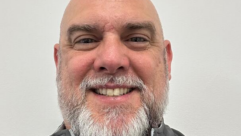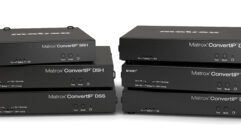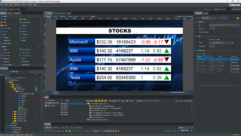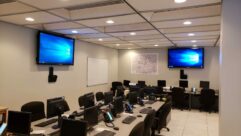Designing Attractions the Operations Staff Will Also Enjoy
Feb 1, 2001 12:00 PM,
Mike Haimson
KEY ONE: COMMONALITY
ALTHOUGH METREON HAS THREE VERY UNIQUE entertainment attractions(The Way Things Work, Airtight Garage and Where the Wild ThingsAre), a single operations team must maintain all three. This teammust also support special events and maintain security systems,overall building background music and architectural displays. Imade the decision early on that at no time would the show qualitybe compromised, but the attractions must share a common designphilosophy and use common components. This would make theattractions easier to operate because they would share similarfunctions, use common components, and could share spare parts.
There are two main areas where a common design philosophy canmake a huge impact on the ease of operations and maintenance in amulti-attraction venue like Metreon: show control and audio-videoprocessing. It is not surprising that these areas share the commonneed for convenient human interfaces. Keeping the user interfacedesign consistent can save an incredible amount of design dollars,with an even greater savings in operations cost.
I use the term “common user interface design” tomean commonality in anything an operator or technician uses. Thisincludes locations of control panels and jacks on walls, proceduresto start and stop the attraction and graphical user interfaces oncomputer screens. It is also important to have a common scheme forthe cable and component labeling, speaker and projector mountingand systems documentation.
KEY TWO: COOPERATION
There were three primary audio-video integrator companies andseveral other technology vendors working on the attractions. Thethree primary integrators are: David Carroll Associates for The WayThings Work, Baker Audio for Airtight Garage and the IntellisysGroup for Where the Wild Things Are. We formed the MetreonAttraction Technologies Team and handled issues of attractionstandards. It was a great forum to discuss ongoing design andinstallation challenges, in addition to the key city code issuesthat needed to be constantly addressed: wheelchair accessibility,seismic bracing for hanging systems and the UnderwritersLaboratories approval of custom technology items like robots,animated props and motion-controlled simulators. This multivendorteam worked well together toward the success of all of theattractions.
KEY THREE: CONTROLS
Show control was key in making the attractions easy to operateand maintain. We chose the Anitech Systems Media Pro 4000 as theshow control system for all attractions. It is rugged yet flexibleand easily expandible. Typically the Media Pro system is programmedand the show run from a single start button. We used a customoperator control console to control the primary functions of eachattraction. The OCC consists of several pushbutton switches, atelephone and a paging microphone. It also has a 4-line display forshowing system health information and usage statistics. A standardMetreon OCC was developed and deployed throughout eachattraction.
The OCC also has another very important button: the emergencystop. Since many of the attractions in Metreon contain mechanicalsystems with moving parts, an emergency stop was needed for safetypurposes. Again, a standard Metreon emergency stop circuit wasdeveloped and used throughout all the attractions. The Anitechmanages an emergency stop voltage bus that is released when the OCCbutton is pressed. This bus release does not use software; it isdriven by the release of relays that cannot be reset without a key.Before a Metreon attraction is restarted after an emergency stop,procedure calls for a thorough visual inspection and an interviewwith whomever pressed the emergency stop. Since the city of SanFrancisco classified Metreon as a public amusement building, a firealarm event must also trigger an immediate shutdown of all theattractions and bring the lights up. This was built in to theMetreon emergency stop unit and the Anitech system.
The OCC provides a convenient user interface for the attractionswith only a few buttons designed for the show operations staff. Thetechnical operations staff also needs to use the OCC, mainly to getinformation about the “health” of the attractions. Thisis particularly important during system start-up, shut-down anddiagnostics. To accommodate this need, we created a MicrosoftVisual Basic application that uses the RSView software from AllenBradley to talk to the Media Pro 4000. Each Metreon attraction hasan administration PC that has an RS-232 interface to the Media Pro4000 Intelligent Control Module. Since the attraction show runsentirely on the microprocessors within the Media Pro 4000, theadministration PC is only used for system updates and as anattraction graphical user interface. The RSView software uses theDF1 protocol to talk to the Media Pro 4000 as a SLC 500 slave.Using Visual Basic, we were able to add many nice graphical controland status display features for each attraction.
In Airtight Garage, more controls are needed for the showoperator than the OCC can provide to support the virtual realitygame systems. When Metreon opened, there were 41 Quaternia gameunits, 29 Badlands motion simulator pods, 21 Hyperbowl game unitsand 12 miscellaneous game units. To control this enormous number ofnetworked game systems, a Metreon operator control panel wasdeveloped. The OCP consists of a touchscreen display with a VisualBasic application running on a computer. The Badlands area has anOCP, and a second OCP is shared between the Hyperbowl and Quaterniagame area. The OCP is used to verify the health of each gamesystem, to allow an operator to abort a game or reset the wholegame system, and to assist with customer team scheduling.
Each OCP computer is interfaced to both the Media Pro 4000 showcontrol system and the game server for each of the groups ofnetworked virtual reality games. Since the OCP can“talk” to the game server and the show control system,an event in the game can control room lighting and other specialeffects. The main function of the game servers is to process thevirtual world, coordinating data for each networked player in agame. As players move or shoot weapons, their positions in thevirtual world are calculated and updated by the game server. Thegame system graphics and audio effects are processed by the localgame PC located in the custom-built cabinet. Each Badlands motionsimulator system also has a motion control PC that controls the DCmotors for the 2-axis pod and the vehicle electronics.
In The Way Things Work and Where the Wild Things Are, there aremaintenance control panels for the animated props. These panels arecalled Hand-Off-Auto switches. In the Auto position, the prop iscontrolled by the show control system. In the Off position, theprop may not be triggered. In the Hand position, the switchtriggers the prop once and the show control system is stilldisconnected. The HOA switches are used to test props that may befaulty or to isolate faulty props from the show before they can berepaired. There are also HOA-like switches for the automatic doorsin these attractions.
Another convenient and standard Metreon attraction maintenancepanel is the remote programming panel. Each attraction has two orthree RPPs with programming jacks for the lighting system, showcontrol system and audio system. A show programmer can sit with thecreative designer and adjust lighting, show timing and audioparameters while in the middle of the show space. The RPPs wereused extensively to program and commission each attraction. Theyare available now to assist in changing any show parameters or totest major pieces of new equipment from within the showenvironment.
KEY FOUR: A/V PROCESSING
The next step after standardizing the show control system andstrategy is defining an audio processing and distribution strategy.We standardized on the MediaMatrix system from Peavey. Eachattraction has its own Mainframe 980. The audio is processed by themainframe and distributed as digital signals via CobraNet to I/Odevices throughout the attraction. Audio analog-to-digitalconversion and digital-to-analog conversion is provided by CAB 8isand CAB 8os, respectively. The MediaMatrix system allows the show’saudio routing and processing to be designed graphically on a PC andcompiled into the mainframe. Real-time event control, such as audioducking for paging, can also be handled by the MediaMatrix system.Real event control from the show is accomplished via an RS-232interface between the Anitech Show Control system and theMediaMatrix Mainframe. On an emergency stop event, the attractionaudio is muted. When a building fire alarm is triggered, theattraction audio is also muted, and the building-wide emergencypaging may be injected into audio signal path.
Developing a video processing and distribution strategy is alsoimportant. Most video at Metreon was stored as compressed M-JPEGcomposite video on hard-disk recorders and played directly to amonitor or projector. For compressed video storage, we used the V1mfrom Doremi Labs. The Way Things Work main theater required ahigher level of video quality. The theater uses three18-foot-diagonal screens and we wanted to play back uncompressedvideo from a D1 original source. To meet this demand, we used fourDiskcovery hard-disk recorders from Sierra Design Labs.
Audio storage is the last key item in our audio-video decisionstrategy kit. At Metreon, background music is stored on CDs andplayed on Sony CDP-D500 industrial CD players. Audio for loopingsound effects are stored on PC cards that plug into Digital SoundModules within the Anitech show control system main cage. Soundeffects that are triggered and/or may overlap with sounds on thesame device are stored on PC cards that are in the Liberty systemfrom Maris Ltd. Audio that must be synchronized to video or otheraudio tracks is stored on Tascam MMP-16 16-track hard-diskrecorders. Simple stereo audio tracks for video were stored on theDoremi video disk recorders.
Crown amplifiers are used exclusively throughout theattractions. Background and specialty speakers used include JBL,Renkus-Heinz and Bose. ATK AudioTek makes the front main theaterspeakers and subwoofer in The Way Things Work attraction. Videoprojectors and video monitors were manufactured by Sony.
Mike Haimson, principal of Carousel Interactive Technologies,worked for Sony Development as the senior project engineer for theMetreon attractions. He was responsible for the overall design andinstallation for the audio, video, show control and othertechnologies involved in the three main attractions. He can bereached at [email protected].










